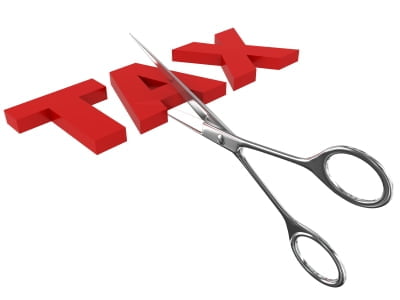The April 17th, 2012 tax filing deadline is just a few weeks away. Fortunately, there are some last-minute ways you can still save money.
Here are four strategies to lower your tax bill:
1. Itemize – Don’t Take the Standard Deduction
People who procrastinate and wait until the last moment to file their taxes often take the standard deduction rather than itemizing their deductions. But that’s a big mistake. Many times itemizing your deductions can save you hundreds or perhaps thousands of dollars. Or it may even get you back a big refund check.
The IRS says the average refund check is nearly $3,000. That’s money a lot of people really need. According Capital One Bank, which just came out with their annual Taxes and Savings Survey, one-third of all Americans plan to spend some or all of their refund checks. Most people will spend on everyday expenses and things like groceries. So itemizing could get you a larger refund and help you pay your monthly bills.
2. Contribute to an Individual Retirement Account
One way to lower your tax bill is to contribute to a retirement account. Unlike with charitable deductions, which had to have been made by December 31st, you can still contribute to an IRA up until the tax-filing deadline, and have it count toward your 2011 taxes. That will lower you taxes and save what you might owe to Uncle Sam.
You can contribute up to $5,000 to an IRA if you’re under 50. If you’re 50 or older, you can contribute $6,000 to an IRA. A person in the 25% tax bracket who puts $5,000 in an IRA will save $1,250 in taxes.
3. File Online for Free
Paying someone to prepare your taxes can cost anywhere from about $50 to a few hundred dollars, on average. And of course, the more complicated your returns the and the more forms you need filled out, the more expensive it is. Some people pay thousands of dollars in tax prep fees.
But instead of paying a CPA or a tax preparation company, if you earned $57,000 or less in 2011 you can use the Free File brand-name software from the IRS and get free tax preparation and free e-filing. The IRS says that in 2011 alone, almost 100 million taxpayers filed their taxes online, using IRS e-file.
Free File is available only through IRS.gov, where a number of tax software companies make their products available at no cost. Some also support state tax returns for free.
But even if you make more than $57,000, anyone can use the IRS’s online Fillable Forms, which are an electronic version of the IRS paper forms. This is a good option for do-it-yourselfers who fill out their own taxes.
4. File on time or Request an Extension
Some people don’t file their taxes on time – and they also don’t bother to request an extension. This is a big no – no that can cost you money. If you fail to file by the tax deadline, the IRS imposes “failure to file” penalties on top of interest for any taxes you don’t pay on time. That fine can be as much as 25% of your unpaid taxes.
So if for whatever reason you can’t file by April 17th, do yourself a favor and save money by getting an extension and avoid that hefty “failure to pay” penalty.










